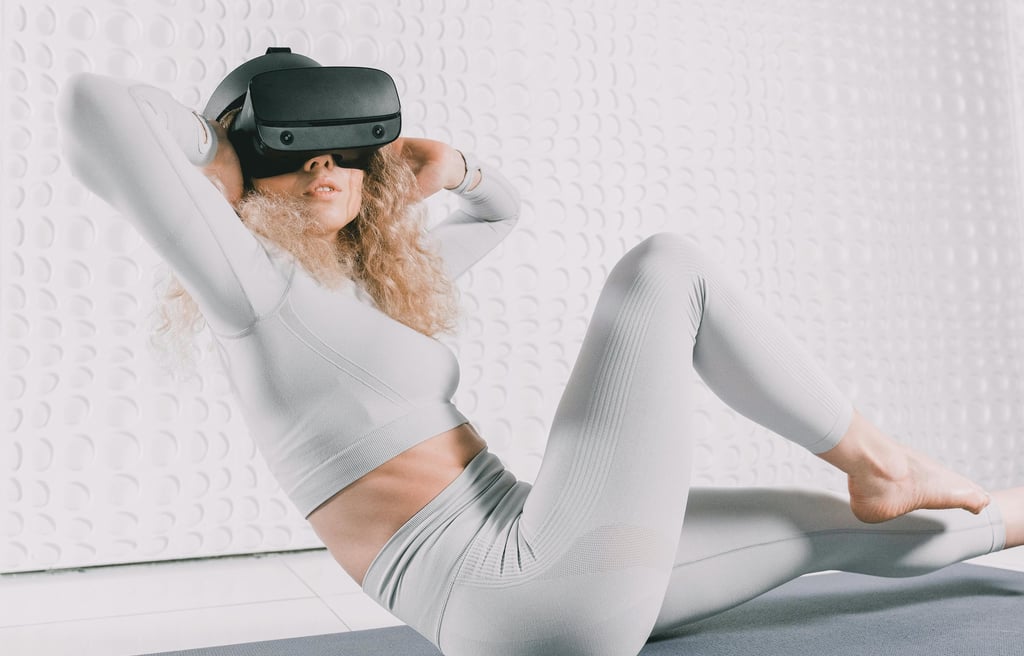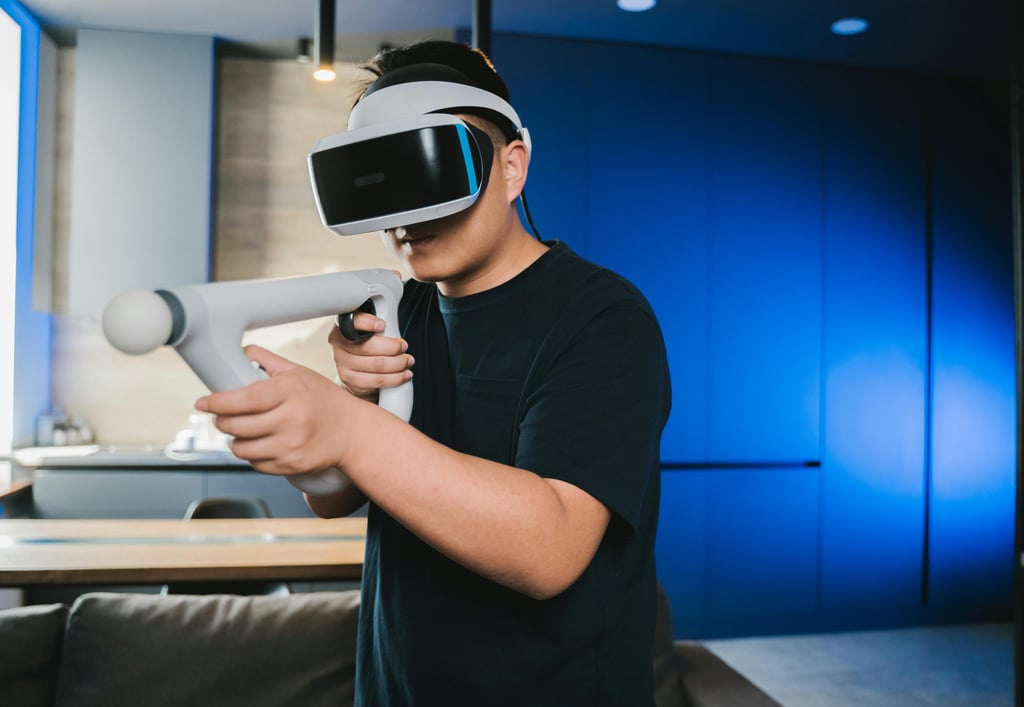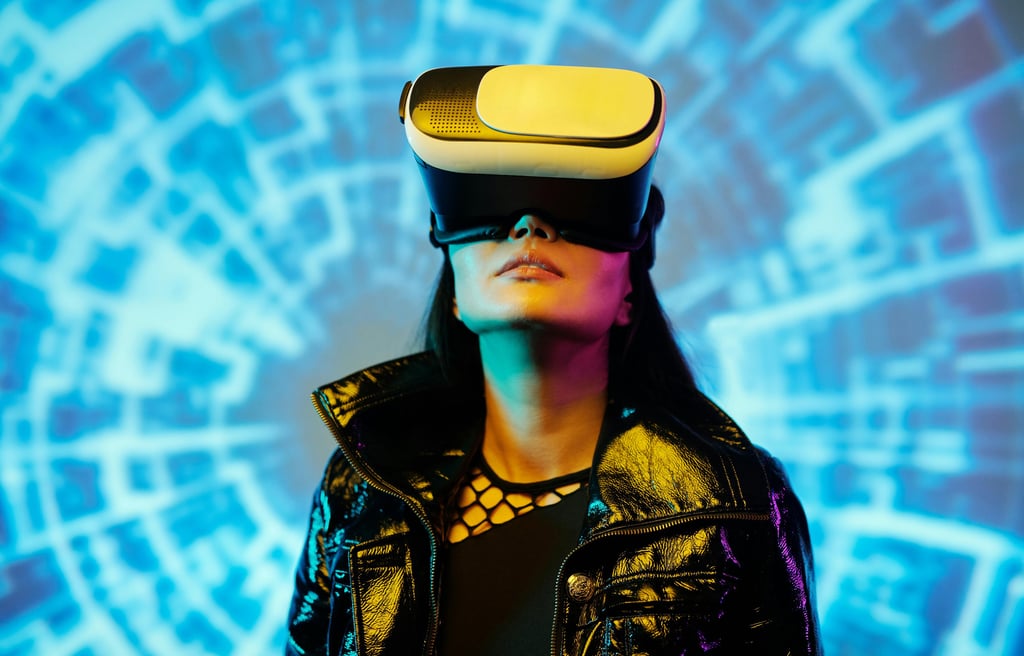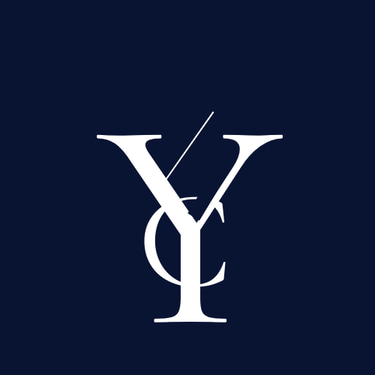Freelancing Jobs for AR/VR Development: Fiverr Pro in 2025
3/20/202510 min read


Introduction to AR/VR Freelancing
In recent years, the field of Augmented Reality (AR) and Virtual Reality (VR) has experienced substantial growth, revolutionizing industries such as gaming, education, healthcare, and real estate. As businesses increasingly recognize the immense potential of these technologies, the demand for skilled AR/VR developers is escalating. This shift provides avenues for freelancers to engage in this expanding market, allowing for greater flexibility and diversity in their work. Freelancing in AR/VR development involves a range of roles from 3D artists and UX/UI designers to software developers and project managers, catering to different skill sets and expertise.
As we look towards 2025, platforms like Fiverr Pro are poised to play a significant role in connecting businesses with AR/VR freelancers. Fiverr Pro, an extension of the popular freelancing marketplace, focuses on high-quality services offered by vetted professionals. This innovation is particularly relevant in the evolving AR/VR landscape where companies seek specialized talents to create immersive experiences. With platforms like Fiverr Pro, both freelancers and clients benefit from a streamlined process that fosters collaboration, productivity, and ultimately, success.
This transformation in the work environment is not only expanding the range of freelancing jobs available in AR/VR, but it is also encouraging professionals to adapt and refine their skills to meet market demands. Today’s freelancers are no longer just limited to traditional roles; they must embrace a continuous learning approach to keep pace with technological advancements. Furthermore, freelancing offers a competitive advantage as it allows individuals to work on various projects across different sectors, thereby diversifying their portfolios and income sources. The future of freelancing in AR/VR development looks promising, fostering creativity and innovation while offering numerous opportunities for skilled professionals in this dynamic field.
Top 5 Freelancing Jobs in AR/VR
The immersive fields of Augmented Reality (AR) and Virtual Reality (VR) are rapidly transforming, leading to a plethora of freelancing opportunities. As we look towards 2025, five promising freelancing roles emerge, presenting both challenges and rewards for professionals in these domains.
1. AR/VR Developer: As a core role in the AR/VR ecosystem, AR/VR developers are responsible for designing and building applications that utilize AR or VR technology. This involves proficiency in programming languages such as C# and C++, as well as experience with development platforms like Unity or Unreal Engine. Clients seek developers to create engaging, interactive experiences that can range from gaming to educational applications.
2. 3D Artist/Animator: Visual aesthetics play a crucial role in the AR/VR experience. A 3D artist or animator focuses on creating lifelike models and animations that enhance user engagement. Professionals in this role often work closely with developers to ensure that visuals align perfectly with the interactive elements of applications. Proficiency in software such as Blender, Maya, or 3ds Max is essential.
3. User Experience (UX) Designer: With the uniqueness of AR and VR, UX designers are crucial for ensuring that applications are intuitive and enjoyable. They conduct user research, create wireframes, and test interfaces to refine user journeys. This role necessitates a deep understanding of both traditional UX principles and the specific needs of AR/VR projects, making it highly sought after in the freelancing market.
4. Content Creator: AR/VR content creators produce immersive storytelling experiences that resonate with users. This can include anything from scripting narratives to creating educational simulations. Given the growing demand for quality content in these technologies, freelancers in this field must be innovative and versatile, capable of adapting to various client needs.
5. Project Manager: To manage successful AR/VR projects, project managers play an essential role in coordinating teams, timelines, and budgets. Effective communication and organizational skills are vital, along with knowledge of AR/VR development processes. As many companies venture into AR/VR projects, the demand for skilled project managers is on the rise.
These five roles not only highlight the diversity of the freelancing opportunities available in AR/VR development but also underscore the necessity for potential freelancers to cultivate a range of skills relevant to the sector.
VR App Development
Virtual Reality (VR) app development is rapidly emerging as a leading freelancing job within the augmented reality (AR) and virtual reality (VR) sector. As organizations across various industries begin to recognize the potential of immersive technologies, the demand for skilled VR developers is on the rise. The field requires a unique set of technical skills, including proficiency in programming languages such as C#, C++, or Java, as well as familiarity with VR frameworks like Unity or Unreal Engine. Moreover, a sound understanding of 3D modeling and design principles can enhance the effectiveness of the VR experience.
The process of creating a VR application typically begins with conceptualization, where developers define the goals and objectives of the project. Following this, developers engage in the design phase, creating 3D models and environments that align with user experience goals. Next, the development phase integrates coding to bring the VR environment to life, followed by rigorous testing to ensure usability and functionality. Finally, the deployment phase makes the VR application accessible to end users, potentially through platforms like Oculus, Steam, or mobile app stores.
For those aspiring to enter the field, various online tools and courses are available to develop essential skills. Consider exploring platforms like Unity Learn or Coursera, which offer comprehensive resources tailored to novice and seasoned developers alike. This burgeoning sector holds significant promise; by mastering VR app development, freelancers can position themselves to capture lucrative opportunities in 2025 and beyond.
AR Design
Augmented Reality (AR) design plays a pivotal role in developing interactive and engaging experiences that blend the digital and physical worlds. As businesses strive to capture user attention, AR design has emerged as a significant tool in various sectors, making it essential for freelancers to acquire the necessary expertise to succeed in this dynamic field.
To excel in AR design, designers should be proficient in 3D modeling, graphic design, and UX/UI principles, along with a good command of programming languages such as C# and JavaScript. Familiarity with AR platforms and software such as Unity, ARKit, and Vuforia is also crucial. These skills enable designers to create immersive applications ranging from mobile games to educational tools and marketing campaigns. Additionally, understanding how to utilize spatial computing and depth sensors can enhance the interactivity of user experiences, setting a freelancer apart in a competitive landscape.
Freelancers engaged in AR design can undertake a variety of projects. These include creating interactive marketing materials, designing virtual try-on experiences for retail clients, or developing educational applications that engage students through immersive learning. Many industries, including retail, real estate, education, and gaming, are leveraging AR to increase engagement and drive sales. This increased demand for AR design skills offers promising opportunities for freelancers dedicated to honing their craft.
For those interested in diving into AR design, now is the perfect time to start. Explore reputable AR design software and online courses that provide insights into this evolving technology. By engaging in these resources, designers can cultivate their skills and ultimately contribute to compelling AR experiences. Enter the dynamic world of AR design now, and position yourself for success in one of the most exciting fields in technology today.
3D Modeling for AR/VR
3D modeling is a crucial facet of augmented reality (AR) and virtual reality (VR) development, serving as the backbone for creating immersive environments and engaging user experiences. As the demand for high-quality AR/VR content continues to rise, skilled 3D modelers are becoming increasingly sought after in the freelance market, particularly on platforms like Fiverr Pro. In this competitive landscape, understanding the nuances of 3D modeling tailored specifically for AR and VR applications is essential for aspiring freelancers.
To begin, 3D modeling for AR/VR encompasses various elements, including the creation of assets for environments, characters, and objects. Each model must be designed with the end-user experience in mind, ensuring that it integrates seamlessly within the immersive context. For instance, an AR application may require realistic physical interactions, while VR models might focus on visual fidelity and scale. This versatility means that 3D modelers must cultivate a diverse skill set, including proficiency in software such as Blender, Maya, or 3ds Max, along with an understanding of real-time rendering techniques.
In addition to technical skills, a keen eye for design and an understanding of how AR/VR alters user perception are invaluable traits. As a 3D modeler, being able to create objects that not only look great but also feel authentic to users is vital. Keeping up with the latest trends and advancements in AR/VR is equally important, as it allows modelers to innovate and enhance their offerings. Interested individuals should consider leveraging online platforms for tutorials and courses, which provide insight into 3D modeling principles tailored for AR/VR.
For those looking to capitalize on this growing field, personal branding and marketing their unique 3D modeling skills on freelancing platforms can lead to lucrative opportunities. By creating a portfolio showcasing your work, you can attract potential clients seeking high-quality AR/VR content. To further support your journey, consider exploring affiliate links to recommended 3D modeling software and educational resources that will refine your expertise and elevate your freelancing career.
Game Development for AR/VR
Game development in the realm of augmented reality (AR) and virtual reality (VR) presents a unique frontier for both creativity and technical skill. As technology continues to evolve, the demand for immersive gaming experiences is on the rise. Developers who specialize in AR and VR are tasked with creating environments that not only entertain but also transport players into completely new worlds. This innovative form of game development requires a solid understanding of both gameplay mechanics and the underlying technology that makes these experiences possible.
To succeed in AR/VR game development, freelancers should be proficient in programming languages such as C#, C++, or JavaScript, primarily for game engines like Unity and Unreal Engine. These platforms are vital for building interactive and engaging game worlds. Additionally, designers should be familiar with 3D modeling software, such as Blender or Autodesk Maya, to create visually appealing characters and environments that enhance the immersive experience. Understanding UX/UI design is equally important, as it ensures players can navigate and interact seamlessly within the game.
The landscape for AR/VR gaming freelancers has been rapidly expanding. With major companies investing heavily in this sector, emerging freelancers are presented with abundant opportunities to work on innovative projects. Examples of successful AR/VR games, like "Beat Saber" and "Pokemon GO", illustrate the potential for creativity and marketability in this space. Aspiring game developers are encouraged to look for platforms and communities that foster learning and collaboration, such as GitHub, Unity's developer community, and game development courses available on various online platforms.
With this growing trend, it is an opportune time for passionate individuals to venture into AR/VR game development. By harnessing the necessary skills and capitalizing on the increasing market demand, freelancers can establish a successful career path in this dynamic field. Seize these opportunities and embark on a journey to create the next big hit in AR/VR gaming.
UX/UI Design for AR/VR Applications
The rapid growth of augmented reality (AR) and virtual reality (VR) technologies has created a demand for specialized UX/UI design skills tailored specifically for these immersive environments. Unlike traditional digital platforms, AR and VR applications present unique challenges that designers must navigate to ensure user-friendliness and aesthetic appeal. The immersive nature of AR and VR means that designers must consider how users interact within a three-dimensional space, requiring a deeper understanding of spatial awareness, navigation, and sensory feedback.
One of the primary challenges faced by UX/UI designers in AR and VR is the creation of intuitive interfaces that do not obstruct the user’s experience. Traditional user interface methods such as buttons and menus must be rethought when designing for environments that involve real-world interactions and 360-degree views. As users may engage with the application using gestures, voice commands, or head movements, designers need to create seamless experiences that rely on natural interactions. This necessitates thorough user testing and iterative design processes to pinpoint challenges that could arise in these novel environments.
To assist designers in mastering these concepts, a variety of resources and tools are essential. Software such as Unity and Unreal Engine provides powerful environments for prototyping AR and VR apps, while tools like Figma and Sketch can help in designing intuitive interfaces. Additionally, online courses focusing specifically on UX/UI design for AR/VR applications can further enhance knowledge and skills in this cutting-edge field.
With the continuous evolution of AR and VR markets, developing expertise in UX/UI design will be crucial for professionals looking to excel in freelancing jobs available on platforms like Fiverr Pro. The scope for innovation in this domain is immense, encouraging designers to upgrade their skills and create compelling and engaging applications that meet user needs.
Conclusion and Next Steps
As we explore the opportunities within freelancing jobs for AR/VR development, particularly on platforms like Fiverr Pro in 2025, it is evident that the landscape offers significant potential. The growing demand for skilled professionals in augmented reality (AR) and virtual reality (VR) signifies a shift in how businesses engage with technology. This trend opens ample avenues for those interested in pursuing a freelancing career in this vibrant field. By capitalizing on this rising demand, freelancers can not only enhance their skill sets but also carve a niche in an industry that is poised for exponential growth.
It is essential to acknowledge that success in AR/VR freelancing requires a commitment to continuous learning and adapting to the ever-evolving technology. Keeping abreast with industry trends, tools, and techniques ensures that freelance professionals remain competitive. Resources such as online courses, webinars, and community forums can significantly contribute to building expertise and staying connected within the AR/VR community.
For those considering venturing into freelancing, platforms like Fiverr Pro represent a strategic starting point. These platforms not only provide access to a vast network of clients but also facilitate the building of a robust portfolio, which is crucial for attracting potential business. Furthermore, engaging with the affiliate links and resources mentioned throughout this post can bolster your journey in AR/VR development. By leveraging these tools and networking opportunities, aspiring freelancers can effectively position themselves as proficient providers of AR/VR solutions in the digital marketplace.
In conclusion, embracing freelancing jobs in AR/VR development presents a promising opportunity. As this field continues to expand, there has never been a better time to explore the possibilities it offers. By investing in personal growth and actively participating in the community, individuals can ensure they are well-prepared to seize the opportunities that await in the dynamic world of AR and VR.






















